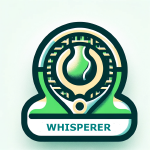Game, Set, Assist – The Unsung Side of Doubles
Game, Set, Assist: The Hidden Art of Great Doubles Partners
In basketball, the assist is celebrated as a cornerstone of teamwork. It’s tracked, analyzed, and replayed.
Yet in doubles tennis, where collaboration is just as vital, the assist often goes unnoticed—the clever setup, the timely shift, the coverage of a partner’s blind side.
A perfect example of true partnership comes from an unexpected arena. Years ago, 13-year-old Natalie Zito was chosen to sing the national anthem before an NBA playoff game between Portland and Dallas.
Midway through the song, overcome by nerves, she froze. The crowd fell silent. Cameras rolled.
Then, a hand on her shoulder.
It was Portland coach Maurice Cheeks, a man with 7,392 assists in his playing career.
What followed may have been his 7,393rd—and most meaningful. He gently encouraged her, began singing along, and brought the crowd with him. Natalie finished the anthem. That moment changed her life.
Doubles tennis needs more of this spirit.
While stats often highlight aces, poaches, and winners, real doubles success is built on the invisible plays. It’s the partner who widens the hitting lane, shadows the net player, or takes a tough shot to let their teammate shine.
What Does an Assist Look Like in Doubles Tennis?
-
A serve placed to set up a poach
-
Subtle footwork movement at net to pressure the opponent
-
A quick “switch” call before your partner sees the lob coming
These moments don’t appear on the scoreboard, but they change the outcome of matches.
Assists in doubles are more strategic than statistical. They rely on timing, positioning, vision, and a deep sense of partnership.
Much like the systems James Clear outlines in Atomic Habits, these small, consistent actions have a compound effect.
- They create momentum.
- They build confidence.
- And they help partners succeed together.
Let’s give credit where it’s due. Let’s back the player who creates space, speaks up early, and has their mate’s back—even when they don’t hit the ball.
These are the assists of tennis.
And maybe, just maybe, they’re what make a good partner unforgettable.
Just like Maurice Cheeks’ 7,393rd.




